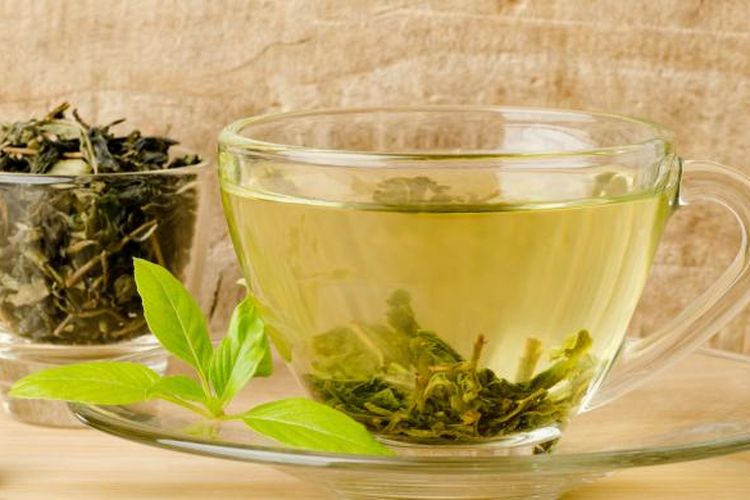Tea (Camellia sinensis) is the most popular caffeinecontaining beverage in the world that originally comes from China. In Indonesia, tea was first introduced in the early 1600 and began mass cultivated in 1830 by Dutch Colonies. Jamus tea plantation located in Jember Regency is one of the oldest tea plantations in East Java, Indonesia. Van Rappard, a Dutch businessman, has grown tea in 478.20 hectares in the area since 1866.
Tea becomes an important commodity with economic and health benefits. Drinking tea is part of the culture in several countries like Japan, China, Britain, and Indonesia. Every household in Indonesia has tea and become their favorite beverage besides coffee. Tea consumption per capita in Indonesia approximately 0.35 kg/capita/year. Furthermore, the global tea production in 2013 significantly has increased from 6% to 5.07 million tons. Meanwhile, Indonesia is the seventh largest tea producer in the world with 152.700 tons of production in 2013.
East Java is one of the provinces which has the biggest tea production in Indonesia, with the total tea production around 2,781 tons in 2017 with about 2,060-hectare production area. Moreover, Indonesian tea is known for its high catechins content and approved by The International Society of Antioxidant in Health and Nutrition (ISAHN) as the highest tea catechin content in the world. Catechin, a compound that determines tea quality, is known for polyphenol derivatives that have high antioxidant properties.
Catechin levels are affected by the tea variety, the elevation of plantation, the age of tea leaves, the harvesting time, and the production method. If compared to other types of tea, green tea has a higher amount of catechin because it is processed after harvesting. East Javanese green tea is believed to have a plentiful amount of catechin. Likewise, green tea has four main catechins; they are (-)-epicatechin (EC), (-)- epigallocatechin (EGC), (-)-epicatechin-3-gallate (ECG), and (-)-epigallocatechin-3-gallate (EGCG). EGCG is the most studied catechin derivate and it has an abundant amount compared to another catechins.
Green tea is well-known to have great health benefits which put EGCG to play important role. EGCG in green tea has been studied to have an anti-cancer effect, it has angiogenesis inhibition, protects DNA from carcinogenic agents, and promotes cancer cell apoptosis10,11. Consuming green tea regularly helps avoiding cardiovascular disease by increasing anti-inflammatory activity, while antioxidant substances in green tea help reducing the amount of oxidant in the body, inhibiting pro-thrombotic contents that prevent vessel occlusion, and reducing the oxidation of low-density lipoprotein (LDL).
Antimicrobial properties in green tea prevent cell membrane damage, inhibit enzyme and bacterial fatty acid synthesis, restrict the virus binding on host cells, and have synergism effects with antibiotics and antifungal. Furthermore, EGCG is beneficial to maintain the bone homeostasis, not only to enhance Runt-related transcription factor 2 (RUNX2) and osterix expressions but also to decrease Nuclear Factors Associated T Cell-1 (NFATc1) and Sclerostin expression in the bone metabolism to boost the bone remodeling and reduce the bone resorption. Thus, the aim of this study is to analyze EGCG in East Javanese green tea (Camellia sinensis) methanolic extract (GTME) in vitro study through phytochemical screening, antioxidant activity, functional groups, and element characterization analysis.
In this study, we successfully isolate 4.41% of EGCG from the East Java green tea by using HPLC and verified it by applying TLC with 276 wavelengths. Phytochemical screening of East Javanese GTME Extract reveals that EGCG has alkaloid, saponin, flavonoid, triterpenoid and steroid properties.
EGCG in East Javanese GTME has strong antioxidant activity with IC50 value as much as 36.71. The FTIR results of this study exhibits the function and structure of EGCG. In EGCG, the tip of peak 3220 cm-1 shows the presence of hydroxyl bonds of EGCG. Peaks at 1517 cm-1, 1448 cm-1, 1335 cm-1, and 1188 cm-1 indicate the presence of double bonds C=O and single bond C-O. EDX is used to examine the elemental composition and heavy metals in EGCG. Element composition (wt%) based on EDX analysis presents that EGCG has both carbon and oxygen as the most elemental composition.
To sum up, the group of compounds contained in the East Javanese GTME are flavonoids, saponins, steroids, triterpenoids, and alkaloids. EGCG as a bioactive ingredient contained in the East Javanese GTME has strong antioxidant activity. Finally, further study needs to be done to manufacture EGCG East Javanese Green Tea as an herbal medicine for health benefits.
Author: Alexander Patera Nugraha
Details of this research available at:





